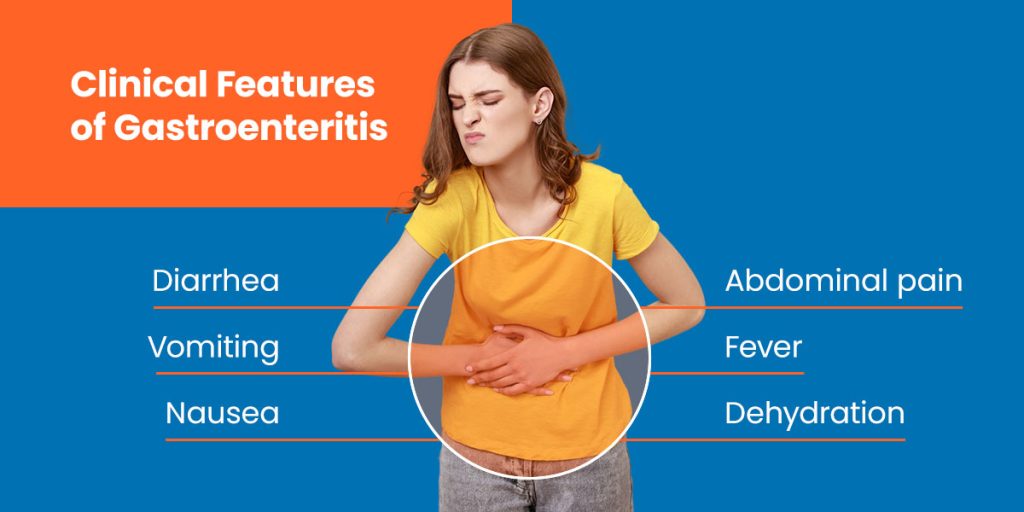As a medical professional in the laboratory industry, you play a vital role in conducting tests on clinical specimens. You help obtain important patient health information to aid in diagnosing, treating, and preventing diseases.
However, in some cases, certain diseases share similar etiological agents and clinical features. One such example is the stomach flu vs. food poisoning. This dilemma may cause some confusion during diagnostic testing.
Lab directors and bench scientists must be able to tell the difference between food poisoning and the stomach flu, as the industry demands precision and accuracy. With a better understanding, you may ensure patients’ proper care and swift recovery.
Food Poisoning
Food poisoning is a common gastrointestinal affliction caused by infectious organisms contaminating food and drink. Some examples of such infectious microorganisms include bacteria, viruses, and parasites. Among the top culprits are bacteria like Staphylococcus aureus and Salmonella.
Food poisoning affects an estimated 48 million individuals annually. While most cases of food poisoning are mild and resolve within a few days, severe instances may necessitate medical attention and even hospitalization.
Etiologies of Food Poisoning
Food poisoning stems from various microbial invaders, each with its own modus operandi in contaminating food and inducing illness. Here are typical etiological agents of food poisoning:
- Salmonella: Among the most prevalent culprits are bacteria such as Salmonella, known for its affinity for meats, eggs and unpasteurized dairy products.
- Clostridium botulinum: Produces toxins that affect the nervous system, leading to potentially fatal botulism.
- Staphylococcus aureus: Commonly found on human skin and in nasal passages, Staphylococcus aureus can proliferate in improperly handled foods. It then produces heat resistant toxins capable of causing rapid-onset illness.
- Escherichia coli (E. coli): Notorious for contaminating various food products and causing severe gastrointestinal distress.
- Listeria monocytogenes: Capable of contaminating many food items and causing severe illness — particularly in vulnerable populations.
- Norovirus and rotavirus: These viral culprits are known for their rapid spread through contaminated food and water, which may trigger gastroenteritis outbreaks.
For additional resources, please refer to the common foods that may cause food poisoning, according to the Centers for Disease Control (CDC).
Clinical Features of Food Poisoning

Food poisoning manifests with a spectrum of clinical features, often characterized by gastrointestinal symptoms and occasionally systemic manifestations. Common clinical features may include the following:
- Abdominal cramping: Often intense and may be accompanied by discomfort or pain.
- Nausea and vomiting: These are typically common clinical features that occur shortly after ingesting contaminated food.
- Diarrhea: Watery stools or hematochezia may develop rapidly, contributing to dehydration.
- Fever: Some cases of food poisoning may present with fever, indicating a systemic response to infection.
Other clinical features may include fatigue, sweating, headache, or muscle aches. These clinical manifestations typically onset rapidly — within hours of consuming contaminated food. This reflects food poisoning’s swift action of toxins or pathogens on the gastrointestinal tract.
The severity and duration of symptoms can vary depending on the etiological agent and individual factors such as immune status and health. While many cases of food poisoning resolve within a few days, some individuals may experience prolonged manifestations or complications. This is particularly true in cases of severe bacterial infections or toxin-mediated illnesses.
It’s essential to recognize the clinical features promptly, as delayed diagnosis and management may lead to dehydration, electrolyte imbalances, and potential complications.
The Stomach Flu — Gastroenteritis
Gastroenteritis, commonly known as the stomach flu, inflames the stomach and intestines. Viral or bacterial pathogens primarily cause this condition.
Viral gastroenteritis is typically caused by viruses like norovirus or rotavirus. These viruses are highly contagious and spread through contaminated food, water, or close contact with infected individuals. On the other hand, bacterial gastroenteritis is caused by bacteria such as Salmonella, Escherichia coli (E. coli) or Campylobacter. This often results from consuming contaminated food or water.
Etiologies of Gastroenteritis
Gastroenteritis has many etiologies, both viral and bacterial. Typical etiological agents of the stomach flu are:
- Norovirus and rotavirus: The most prevalent viral agents include norovirus and rotavirus, which are notorious for their ability to spread rapidly and cause outbreaks. This is particularly the case in settings like hospitals and childcare facilities.
- Salmonella: Associated with contaminated poultry and eggs, leading to widespread foodborne illness.
- Escherichia coli (E. coli): Strains like O157:H7, found in undercooked beef and contaminated produce, are significant contributors.
- Campylobacter: A prevalent bacterial cause of gastroenteritis, Campylobacter is transmitted through undercooked poultry and unpasteurized dairy products.
Clinical Features of Gastroenteritis
Gastroenteritis presents several characteristic clinical features. Common manifestations may include:
- Diarrhea: Typically presents with loose or watery stools, occasionally containing blood or mucus.
- Vomiting: Vomiting is also common, particularly among children, and may occur alongside or independently of diarrhea.
- Nausea: Frequently reported and can persist throughout the illness.
- Abdominal pain: Abdominal pain, ranging from mild discomfort to severe cramping, is another prevalent symptom.
- Fever: Fever may accompany the condition, especially in cases of bacterial gastroenteritis, often accompanied by chills.
- Dehydration: This is a significant concern due to fluid loss from diarrhea and vomiting, which may lead to dry mouth, reduced urine output, and dizziness.
Symptoms typically onset abruptly within one to three days of exposure to the causative agent and usually resolve within a few days to a week. However, symptoms may persist longer in some instances — for example, in immunocompromised individuals or in infections with specific pathogens like norovirus.
How to Tell the Difference Between Food Poisoning and the Stomach Flu
Understanding these nuances of food poisoning vs. the stomach flu is essential for accurate diagnosis and appropriate management in laboratory settings. Lab directors and bench scientists should be aware of these differences to provide effective guidance and support in cases of suspected foodborne illness or viral gastroenteritis outbreaks.
Clinical Features
Food poisoning typically manifests with symptoms like nausea, vomiting, diarrhea, and abdominal pain. In contrast, the stomach flu often presents similarly but may include fever, body aches, and fatigue.
Furthermore, while both conditions may cause discomfort and dehydration, food poisoning generally involves more intense gastrointestinal manifestations, such as severe vomiting and diarrhea. As a result, food poisoning may lead to a higher risk of dehydration and electrolyte imbalance.
Onset of Symptoms
One key difference lies in the onset of clinical features. Food poisoning manifestations usually appear rapidly — within a few hours of consuming contaminated food or drink. On the other hand, stomach flu manifestations develop gradually over 24 to 48 hours after exposure to a virus.
Duration and Severity
Lastly, the duration and severity of the two conditions differ. Food poisoning resolves relatively quickly, typically within a day or two. This results from the body eliminating harmful toxins ingested through contaminated food or drink. Conversely, the stomach flu may persist for several days — with symptoms lingering for up to a week or more. Of course, the duration and severity depend on the individual’s immune response and the specific virus involved.
Diagnostic Approaches
Utilizing advanced diagnostic tools — particularly molecular diagnostics — has revolutionized the detection of gastrointestinal diseases. Applied BioCode® Gastrointestinal Pathogen Panel (GPP) shines in this regard as a molecular diagnostic test for the detection of pathogens. The GPP employs Barcoded Magnetic Bead (BMB) technology to detect and identify 17 gastrointestinal pathogens in a single test.
GPP enables swift and precise pathogen detection by leveraging multiplex testing capabilities to help facilitate timely intervention and management. GPP streamlines laboratory workflows and enhances diagnostic accuracy with high throughput and flexible data masking options. By implementing technologies like GPP into diagnostic protocols, laboratories can confidently differentiate between food poisoning and the stomach flu, ultimately improving patient care and public health outcomes.
Why Trust Us
With a mission to transform laboratory experiences, Applied BioCode Inc. has developed cutting-edge solutions to support the medical industry in research and diagnosis. We have extensive experience and expertise in designing, developing, and commercializing multiplex testing products, such as the GPP.
Additionally, we have pioneered BMB technology by combining digital barcodes with immuno and molecular chemistry, revolutionizing pathogen detection. Our GPP, powered by this innovative technology, offers a comprehensive molecular test that simultaneously detects and identifies 17 gastrointestinal pathogens. This all-encompassing solution provides efficient and accurate results.
Moreover, our dedication to customer support and technical assistance ensures that you receive the highest service and expertise. Trust Applied BioCode Inc. for insights into gastrointestinal diseases backed by our experience, expertise, and commitment to excellence.
Transform Your Laboratory Experience With Applied BioCode Inc.
Distinguishing between food poisoning vs. the stomach flu is crucial for accurate diagnosis and appropriate treatment. Explore Applied BioCode® Gastrointestinal Pathogen Panel for its precision and utility in diagnosing gastrointestinal diseases efficiently. Contact us online and embrace the future of gastro diagnostics.



